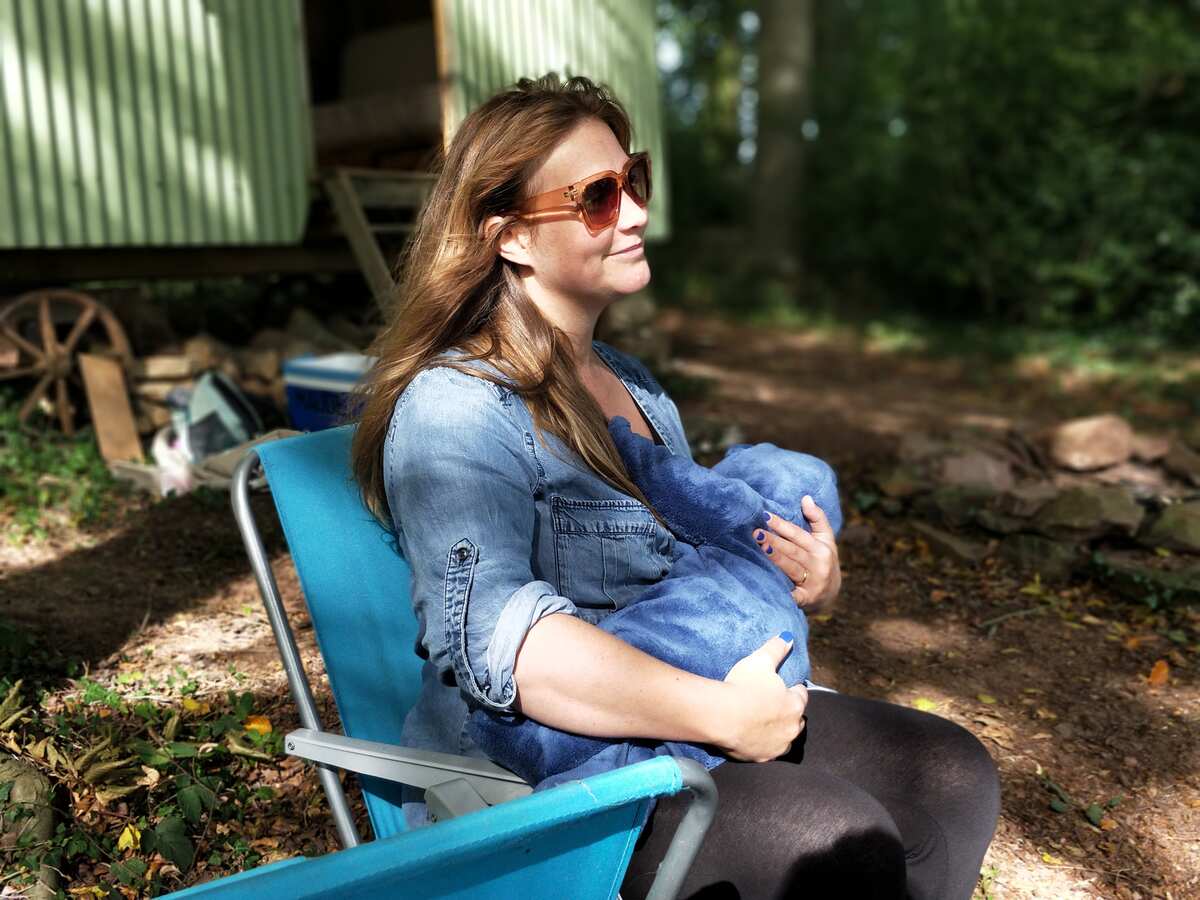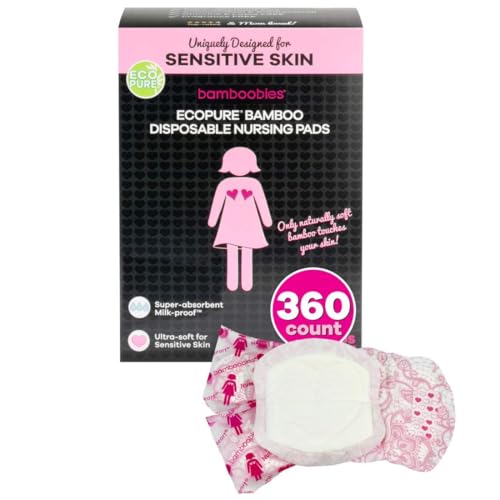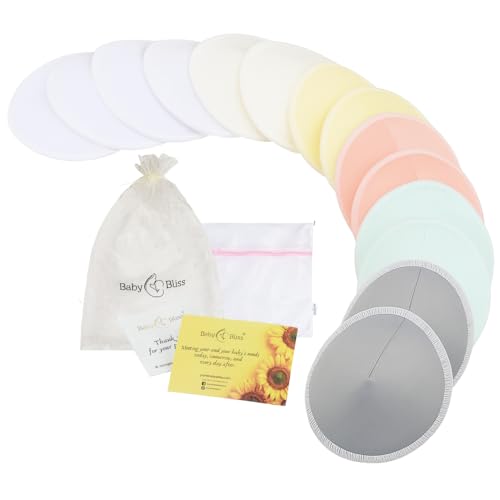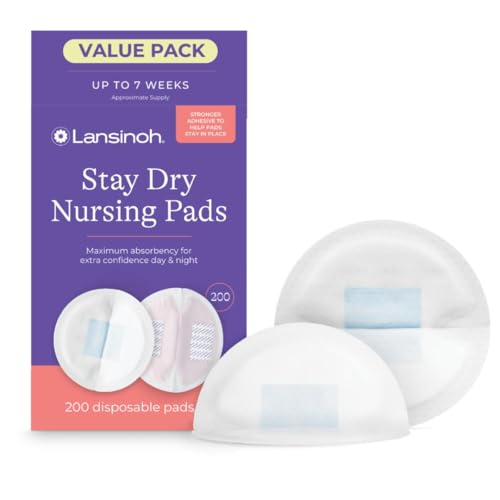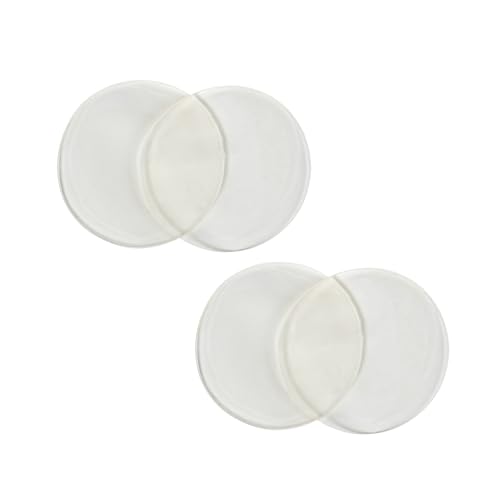Are you a new mom struggling with breastfeeding leaks and nipple soreness? Don’t worry, you’re not alone! Luckily, there’s a simple solution: nursing pads. These small, absorbent pads can be inserted into your bra to collect milk leaks and prevent embarrassing stains on your clothes.
There are three main types of nursing pads to choose from disposable, reusable, and silicone. Disposable pads are a practical choice for moms on-the-go, but they can add up in cost over time. Reusable pads are more cost-effective and eco-friendly, but they do require washing. Silicone pads are the priciest option, but they offer the added benefit of preventing leaks before they even start.
So which type is right for you? It all comes down to your personal preferences and lifestyle. To help you make the best decision, we’ve compiled a list of the 10 best nursing pads in every category.
Our Top Picks
- Best Nursing Pads For Breastfeeding: Bamboobies Women’s Disposable Nursing Pads
- Best Nursing Pads For Heavy Leaking: Medela Disposable Nursing Pads
- Best Organic Nursing Pads: Kindred Bravely Reusable Nursing Pads
- Best Washable Nursing Pads: Lansinoh Reusable Nursing Pads
- Best Reusable Nursing Pads: EcoNursingPads Reusable Bamboo Nursing Pads
- Best No-Show Nursing Pads: Baby Bliss Washable Nursing Pads
- Best Nursing Pads For Sensitive Skin: Bamboobies Reusable Nursing Pads
- Best Disposable Nursing Pad: Lansinoh Stay Dry Disposable Nursing Pads
- Best Nursing Gel Pads: Ameda ComfortGel Nipple Gel Soothing Pads
- Best Nursing Pads For Large Breasts: Mother-Ease Cloth Nursing Pads
In This Article
HappyBabyHub’s Best Nursing Pads Picks
Bamboobies Women’s Disposable Nursing Pads – Best Nursing Pads For Breastfeeding
- Biodegradable
- Chlorine-free
- Individually wrapped for sanitation on the go
- Great texture (very soft and silky)
- Tend to stick to your nipples when they are wet
This set includes 360 single-use nursing pads, divided into three boxes of 120 pads each, all individually wrapped for easy portability. The super-soft top sheet of the nursing pads is made from renewable resources, and the absorbent inner core is composed of sustainable wood pulp that has been certified. Moreover, these nursing pads are gentle on delicate skin and feature a charming lace design, with a protective backing that prevents leaks.
Related: Best Nursing Pajamas
Medela Disposable Nursing Pads – Best Nursing Pads For Heavy Leaking
- Keeps you dry
- Absorbs very well
- These are very soft and pretty fluffy
- Very comfortable if you have sore nipples
- Individual wrapping is not perforated and so a bit hard to open
Not only do these pads from Medela prevent embarrassing leaks, but their contoured design also provides a subtle and feminine shape under clothing. Choose from a pack of 30, 60, or 120 to fit your needs.
These disposable nursing pads are crafted with ultra-absorbent materials to keep you dry and comfortable, whether day or night. They feature a soft top layer to keep moisture away from your skin, ensuring ultimate protection. Plus, with self-adhesive tape, they stay securely in place.
Kindred Bravely Reusable Nursing Pads – Best Organic Nursing Pads
- The shields are big enough to cover very well
- They’re super soft on the inside and have an absorbent side on the other
- Can wash and dry as desired and still stay soft
- The color is solid and no pattern on it
- Not ideal for wearing for long periods of time
The inside layer of these washable nursing pads is made of 100% organic bamboo, giving you a luxurious feel every time you use them. The middle layer is composed of highly absorbent microfiber that wicks away moisture, and the outside layer is made of waterproof PUL fabric, keeping your nursing bras and clothes dry and leak-free.
Not only do these reusable pads save you money, but they also help reduce waste. The smart curved design of these pads makes them easy to fit and discreetly conceal in your nursing bras, and they come in a pack of 4 pairs (8 pads), so you can keep a spare pair in your bag, diaper bag, or nursing station.
Lansinoh Reusable Nursing Pads – Best Washable Nursing Pads
- They absorb a good amount
- the material is soft
- Appropriate size
- Does not give a wet feeling even when soaked
- Not very breathable
Lansinoh’s washable nursing pads offer three layers of natural fibers, including an absorbent core that dries quickly, a waterproof outer layer, and a charming little purple heart tag. These breast pads are washable and reusable, allowing you to save money in the long term while also reducing waste.
Each box comes with eight washable breast pads (four pairs) and a washing bag, making it simple to clean and reuse the pads. They’re gentle on even the most sensitive skin, thanks to the absorbent bamboo rayon core that quickly soaks up any leaks, keeping you feeling fresh and dry. The teardrop shape is designed to fit your body comfortably, ensuring a comfortable and discreet fit.
EcoNursingPads Reusable Bamboo Nursing Pads – Best Reusable Nursing Pads
- Very soft
- Absorbent
- Handy bag for storage
- Made of organic bamboo
- If you expose them to air while they are wet, such as when you are feeding, they feel very cold and wet when you put them back on
These pads are softer and more absorbent than cotton or disposable pads, and their protective outer layer ensures leak prevention whether used during the day or at night. Each bundle contains two different types of pads, designed for different flow levels. The ultra-soft velvety flower-shaped day-sies are perfect for lighter days, while the thick, rounded, organic bamboo pads offer maximum absorbency for heavier or nighttime flow.
Baby Bliss Washable Nursing Pads – Best No-Show Nursing Pads
- Soft on both the bamboo fabric and the silky backside
- Comes with a mesh laundry bag
- Easy to clean
- They have a nice cupped shape
- They can look bunchy around the edges in some bras/shirts
Baby Bliss nursing pads are designed to provide you with a comfortable, customized fit that won’t show through your clothes. With different sizes to choose from, these pads conform to your body for unbeatable comfort. The three-layer design features bamboo fabric that’s incredibly soft, microfiber for maximum absorbency, and a polyester outer layer that’s leak-proof.
In each set, you’ll receive 14 reusable nursing pads made from luxurious bamboo, as well as a mesh laundry bag and an organza storage bag. You’ll only need one set per week, making them a budget-friendly option.
Bamboobies Reusable Nursing Pads – Best Nursing Pads For Sensitive Skin
- Soft, absorbent, but not too bulky
- Easy to wash
- Hides easily under a bra
- Good for sensitive skin
- A little pricey
This set includes a pair of thick and highly absorbent nighttime nursing pads along with three pairs of thin heart-shaped nursing pads, ensuring you always have a variety of options to choose from.
The pads’ heart-shaped cups, no matter your cup size, are designed to make your breasts less noticeable under your clothes. For those heavy leaks, opt for the round-shaped pads which offer more surface area protection. The pads are extremely soft and cozy for even the most delicate skin, and for the best results, wear the velour side towards your breast.
They can be easily positioned to suit your style, and are compatible with your favorite nipple creams for added comfort when nursing.
Lansinoh Stay Dry Disposable Nursing Pads – Best Disposable Nursing Pad
- They are compact and easy to toss into small, hidden pockets in your purse or diaper bag
- They lay nicely across the breast and do not show through clothing
- They have adhesives that nicely hold the pads in place
- Very absorbent
- No odor neutralizer
This box comes with a whopping 100 or 200 nursing pads! That’s a lot of peace of mind for breastfeeding moms. These disposable pads are super absorbent and capable of holding up to 20 times their own weight, so you can rest easy day and night knowing that you’re well protected.
What’s even better is that using these pads is a breeze! Just peel off the adhesive tab and stick them onto any of your regular or nursing bras. These nursing pads are designed to be extra gentle on mom’s delicate skin, and the waterproof lining provides extra assurance against leaks.
Ameda ComfortGel Nipple Gel Soothing Pads – Best Nursing Gel Pads
- Easy to clean
- Great for soothing nipples
- Very soft
- They calm your nipples and help them recover too
- They shrivel up a bit when washed
These nursing gel pads can provide a soothing and cooling relief to your nipples while offering protection against soreness or breastfeeding-related injuries. They create a moist wound environment, which is recommended for optimal wound healing. They fit snugly inside most nursing bras, providing extra padding and protection against friction from clothing while nursing.
These pads are durable and can be washed and reused multiple times. They are specifically designed for nursing mothers experiencing nipple pain, helping to save delicate breast tissue and treat damaged nipples by providing soothing relief.
Mother-Ease Cloth Nursing Pads – Best Nursing Pads For Large Breasts
- The contoured shape and size keep them invisible under clothing
- the backing is soft and doesn’t make any crinkle noises
- They’re bigger so nice for large breasts
- Easy to clean and dry by hand
- A bit expensive compared to other
These large nursing pads feature a moisture-resistant layer that stops embarrassing leaks while allowing your skin to breathe. They have been expertly designed for ultimate comfort and discreetness. The StayDry layer helps keep moisture away from your skin, preventing any unwanted clinging. Plus, they are both machine washable and dryable, making them easy to clean and maintain.
You Might Also Like: Best Nursing Covers
Types Of Nursing Pads
- Disposable: Designed for single usage and may be discarded after absorbing your breast milk for a while. They’re fantastic when you’re on the road because they frequently come separately wrapped and you may discard them once they’ve done their job.
- Reusable: Because these pads are made to be cleaned and used again, they are ultimately better for the environment and your wallet. Extra washing might not seem all that tempting, especially in the first few weeks after having a baby.
- Silicone: Nursing pads made of silicone are not absorbent. To stop leaks, they instead gently push on the breast. These pads are made of soft silicone and may be used with or without a bra due to their adhesive surface that sticks to your breast. They are frequently used for swimming or beneath fashionable apparel.
- Hydrogels: Pads made of hydrogel are not utilized for leaks. They may be stored in the freezer or refrigerator to give cold comfort, and they aid in soothing and healing painful nipples.
What Are Nursing Pads?
Nursing pads can be used with any type of bra, including ordinary bras, sports bras, pumping bras, and nursing bras. The pads are gentle on delicate skin, which is especially crucial when you have raw, sensitive nipples. They are composed of absorbent fabric, often either cotton or bamboo, to soak up any surplus fluids from your breasts (1).
To prevent soreness or skin irritation, the American Academy of Pediatrics (AAP) recommends avoiding excessive moisture on your nipples between feedings (2).
When Should I Start Wearing Nusing Pads?
While some women may experience leaking of colostrum, the antibody-rich milk, in late pregnancy, it is more common for milk leakage to occur after the baby is born and your milk supply has come in (3). It’s a good idea to have nursing pads on hand before the baby arrives so you’re prepared. You can start wearing nursing pads as soon as you experience any milk leakage to avoid any discomfort or embarrassment.
Why Use A Nursing Pad?
You could use a breastfeeding pad for a few different reasons. For starters, they can assist in absorbing any leaking breast milk so that your clothing won’t become stained. Additionally, if your breasts are swollen or painful, they might offer a little extra support and cushion. In addition to reducing the danger of infection, nursing pads can assist in keeping your breasts dry.
How Many Nursing Pads Do I Need?
It depends on a variety of variables, including how frequently you intend to breastfeed, how strong your flow is, etc. A decent rule of thumb is to always keep at least 4-6 breastfeeding pads on hand. This will guarantee that, even if your flow is heavy, you have enough pads to last a day or two.
Most disposable nursing pads are sold in boxes containing between 60 and 200 pads. Don’t overspend on pads upfront if you’re a first-time mom who is breastfeeding. Most packs of reusable pads contain at least two pairs. Several pairs of thin pads for the day and one set of bigger pads for the night are included in some of the larger packs.
Can I Wear Nursing Pads All Day?
Wearing nursing pads all day is typically safe. To avoid skin irritation, which can lead to the development of yeast, germs, and illnesses like thrush and mastitis, it is crucial to make sure the pads are changed often. Choosing a nursing pad that is comfy and causes no discomfort is also vital. While some women find that using nursing pads all day reduces their leakage, others discover that going without them is more pleasant.
Can Nursing Pads Cause Thrush?
You run the risk of getting thrush if you use nursing pads that aren’t absorbent enough. Yeast overgrowth is what causes the ailment known as thrush. Natural fiber nursing pads, like cotton, are less likely to result in thrush. The risk of thrush may be reduced by keeping oneself as dry and clean as possible, but once you start experiencing symptoms, it might be time to move from reusable pads to more sanitary disposables.
How Do You Clean Reusable Nursing Pads?
You may clean your reusable nursing pads in a few different ways. One method is to give them a few minutes of soaking time in a solution of vinegar and water. Another method is to soak them in a solution of water and baking soda.
You might also do it by first giving them a brief soak in cold water. After that, you may wash them in a regular laundry cycle. Avoid bleaching agents and be sure you use a mild detergent. Your nursing pads can also be washed by hand if you’d like. Simply soak them in warm water mixed with a light detergent, then thoroughly rinse them.
